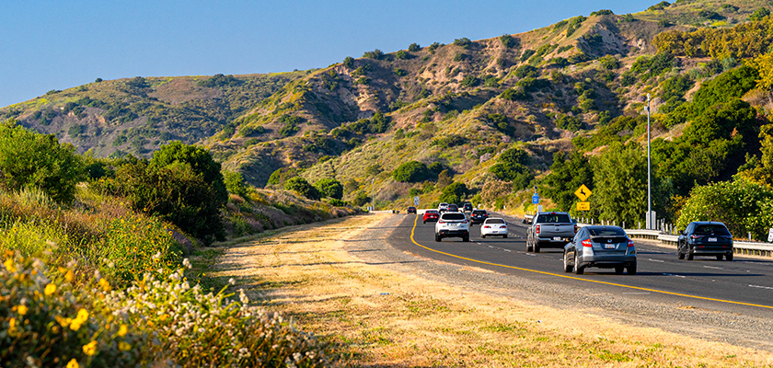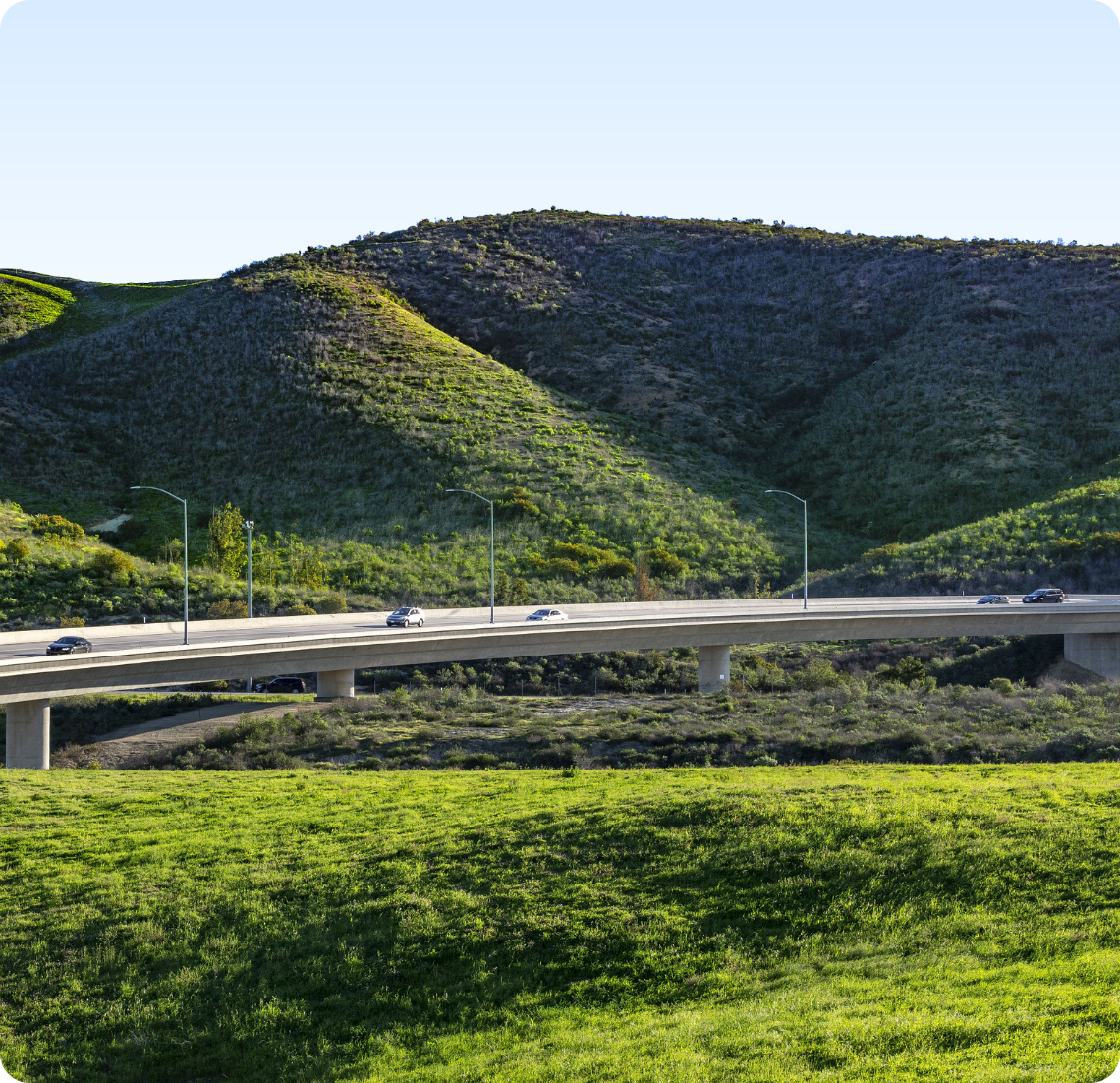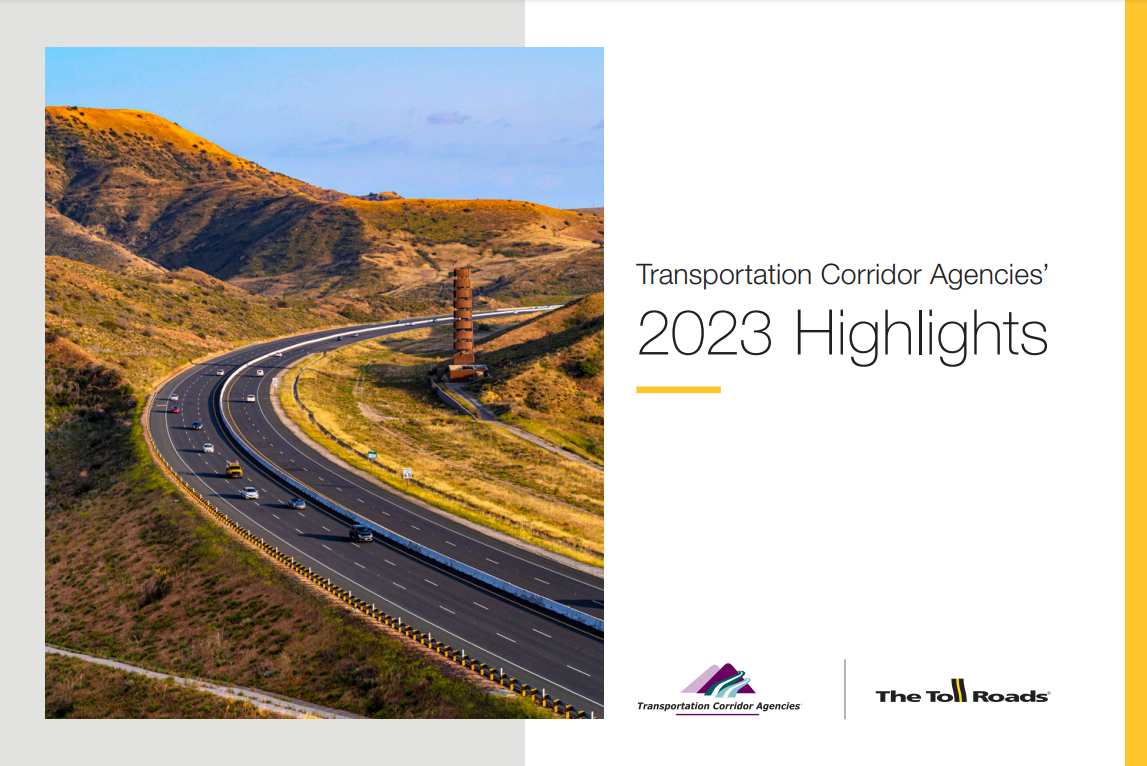Connecting a vision.
The path to The Toll Roads was paved by visionary leaders who created a plan to enhance regional mobility and bring much needed congestion relief. This vision was brought to life through the creation of the Transportation Corridor Agencies.
A history of sound planning.
In 1980, the Transportation Corridor Agencies (TCA) – operator of The Toll Roads, was formed when exploding population in the region led to increased traffic congestion. The opening of The Toll Roads brought much needed traffic relief and the ability to accommodate future growth in the area. Visionaries laid the groundwork to put TCA on the map as a key mobility partner in Orange County. Today, more than 250,000 trips are taken each weekday on our 51-mile toll road network with almost 89 million yearly toll transactions, which means less vehicles on the freeways and local roads.
TCA is committed to promoting mobility, safety and environmental quality as essential components of Orange County’s vibrant economy and quality of life that benefit all residents and road users. Learn more about what’s ahead.
TCA consists of two agencies.
The Foothill/Eastern Transportation Corridor Agency (F/ETCA) and San Joaquin Hills Transportation Corridor Agency (SJHTCA) are two joint powers authorities formed by the state of California to plan, finance, construct and operate The Toll Roads. The two agencies operate under the name Transportation Corridor Agencies.




Foothill/Eastern Transportation Corridor Agency
State Routes 133, 241 and 261
MEMBER AGENCIESF/ETCA member agencies are the following cities along with the County of Orange’s 3rd, 4th and 5th Districts.
- Anaheim
- Dana Point
- Irvine
- Lake Forest
- Mission Viejo
- Orange
- Rancho Santa Margarita
- San Juan Capistrano
- Santa Ana
- Tustin
- Yorba Linda

San Joaquin Hills Transportation Corridor Agency
State Route 73
MEMBER AGENCIESSJHTCA member agencies are the following cities along with the County of Orange’s 3rd and 5th Districts.
- Aliso Viejo
- Costa Mesa
- Dana Point
- Irvine
- Laguna Hills
- Laguna Niguel
- Laguna Woods
- Mission Viejo
- Newport Beach
- San Juan Capistrano
- Santa Ana
OUR Mission
Implement and operate a highway network of congestion free travel alternatives with a focus on customer service, innovation and self-reliant financial approaches, while considering regional transportation needs and opportunities.
The success story continues.
Decades of success have paved the way for TCA. The Agencies continue to be at the forefront of tolling innovation with a solid footprint as a mobility solutions-based leader in the region. Working with local transportation partners, we are committed to deliver meaningful roadway improvements that help sustain our quality of life and fuel our economy.


An innovative approach to funding.
When TCA was formed in the 1980’s, an exploding population in the region, worsening traffic congestion and shrinking transportation funds were the reality.
With fewer tax dollars available to fund transportation projects, TCA took a new approach to plan, finance, construct and operate the roadways. Instead of government dollars, The Toll Roads was financed through non-recourse toll revenues bonds backed by tolls and development impact fees.
The bonds can only be repaid by future tolls and development fees. Since the bonds are not backed by the government, taxpayers are not responsible for repaying the debt, nor do taxpayers carry the risk if future toll revenues fall short. Toll and development impact fee revenue goes towards retiring the construction debt, funding additional improvements, and covering costs of operating The Toll Roads.
Maintenance and Safety
While TCA planned, built, financed, and continues to operate The Toll Roads, the facilities are owned and maintained by Caltrans. The California Highway Patrol provides public safety enforcement.


